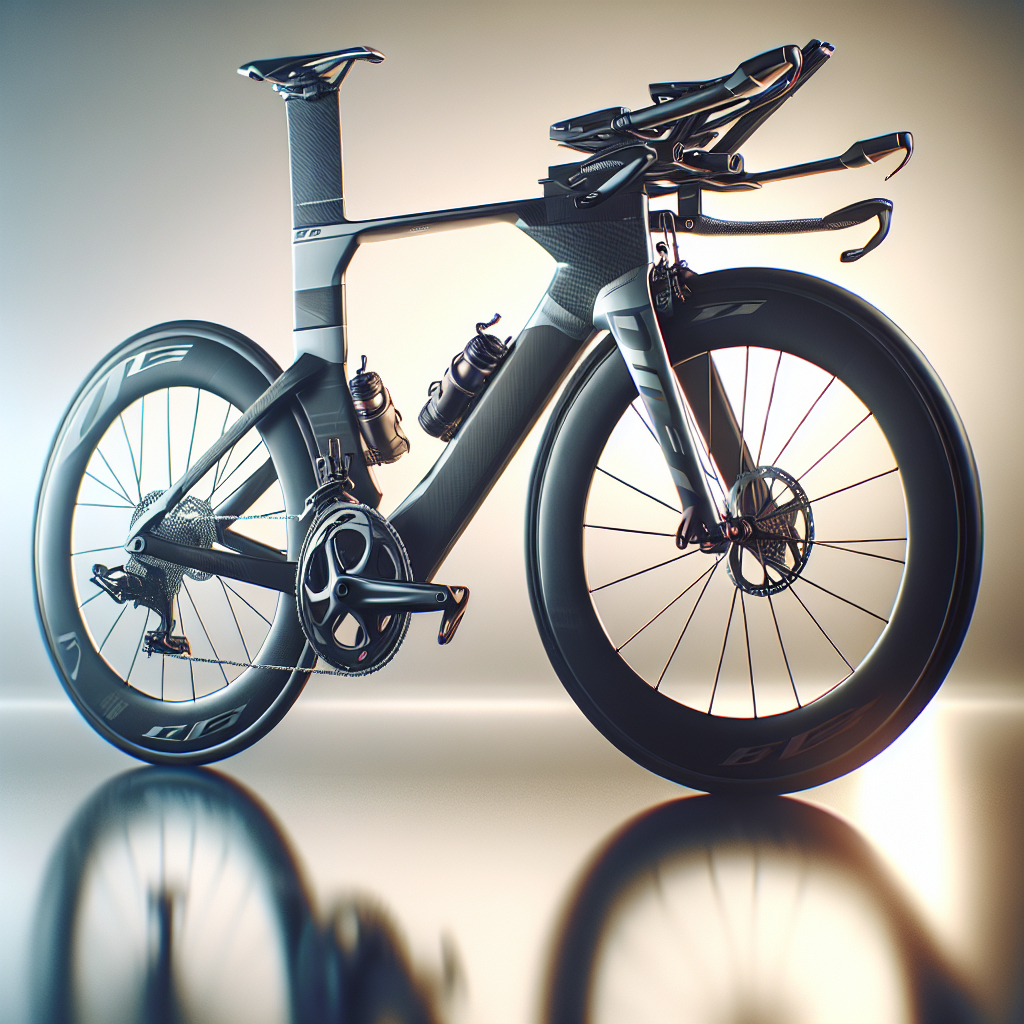
Triathlon bikes are specialized performance machines designed to meet the unique demands of multisport athletes. These bikes are engineered to optimize speed, efficiency, and comfort during the cycling leg of a triathlon, which can range from short sprints to grueling Ironman distances. In this article, we will explore the key features that set triathlon bikes apart from other types of bicycles, and how these features contribute to the overall performance of the athlete.
Design and Aerodynamics
One of the most distinguishing characteristics of a triathlon bike is its aerodynamic design. Unlike traditional road bikes, triathlon bikes are built with a focus on reducing drag and maximizing speed. The frame geometry, tube shapes, and component integration all play a crucial role in achieving this goal.
Frame Geometry
The frame geometry of a triathlon bike is designed to place the rider in a more aerodynamic position. This is typically achieved by having a steeper seat tube angle, which positions the rider further forward over the bottom bracket. This forward position not only reduces the frontal area exposed to the wind but also helps to engage the quadriceps muscles more effectively, which can be beneficial for the subsequent running leg of the triathlon.
Aerodynamic Tube Shapes
Triathlon bikes often feature aerodynamic tube shapes, such as teardrop or truncated airfoil designs. These shapes are engineered to minimize air resistance and improve airflow around the bike. The use of high-modulus carbon fiber materials allows manufacturers to create these complex shapes while maintaining strength and stiffness.
Component Integration
Another key aspect of triathlon bike design is the integration of components. This includes internal cable routing, hidden brakes, and integrated storage solutions. By reducing the number of exposed components, manufacturers can further reduce drag and create a cleaner, more streamlined appearance.
Comfort and Fit
While aerodynamics are crucial, comfort and fit are equally important for triathlon bikes. A well-fitted bike can help prevent injuries, improve efficiency, and ensure that the athlete can maintain their aerodynamic position for extended periods.
Adjustable Cockpit
Triathlon bikes typically feature an adjustable cockpit, which includes the handlebars, stem, and aero bars. This adjustability allows athletes to fine-tune their position for optimal comfort and performance. Aero bars, in particular, are a defining feature of triathlon bikes, providing a more aerodynamic hand position and allowing the rider to rest their upper body during long rides.
Saddle Selection
The saddle is another critical component for comfort. Triathlon-specific saddles are designed to accommodate the forward-leaning position of the rider. These saddles often have a wider nose and additional padding to reduce pressure on sensitive areas. Some models also feature cutouts or channels to further enhance comfort.
Frame Compliance
While stiffness is important for power transfer, some degree of frame compliance is necessary to absorb road vibrations and reduce fatigue. Manufacturers achieve this balance by using advanced carbon fiber layups and incorporating features such as seat stays and fork designs that provide vertical compliance without sacrificing lateral stiffness.
Performance Enhancements
In addition to aerodynamics and comfort, triathlon bikes often come equipped with performance-enhancing features that can give athletes a competitive edge.
Wheel Selection
Wheels play a significant role in the performance of a triathlon bike. Deep-section carbon wheels are commonly used for their aerodynamic benefits. These wheels reduce drag and improve speed, especially in flat and rolling terrain. However, they can be more challenging to handle in crosswinds, so athletes must consider the course profile and weather conditions when selecting their wheels.
Power Meters
Power meters have become an essential tool for serious triathletes. These devices measure the power output of the rider, providing valuable data for pacing and training. By monitoring their power output, athletes can ensure they are riding at an optimal intensity, avoiding the risk of overexertion and preserving energy for the run.
Hydration and Nutrition Systems
Proper hydration and nutrition are critical for triathlon performance. Triathlon bikes often feature integrated hydration and nutrition systems, such as aero bottles, bento boxes, and rear-mounted bottle cages. These systems allow athletes to stay fueled and hydrated without compromising their aerodynamic position.
Conclusion
Triathlon bikes are highly specialized machines designed to meet the unique demands of multisport athletes. With their aerodynamic design, adjustable fit, and performance-enhancing features, these bikes can significantly improve an athlete’s performance during the cycling leg of a triathlon. Whether you are a seasoned triathlete or a newcomer to the sport, investing in a well-designed triathlon bike can help you achieve your goals and reach new levels of performance.

